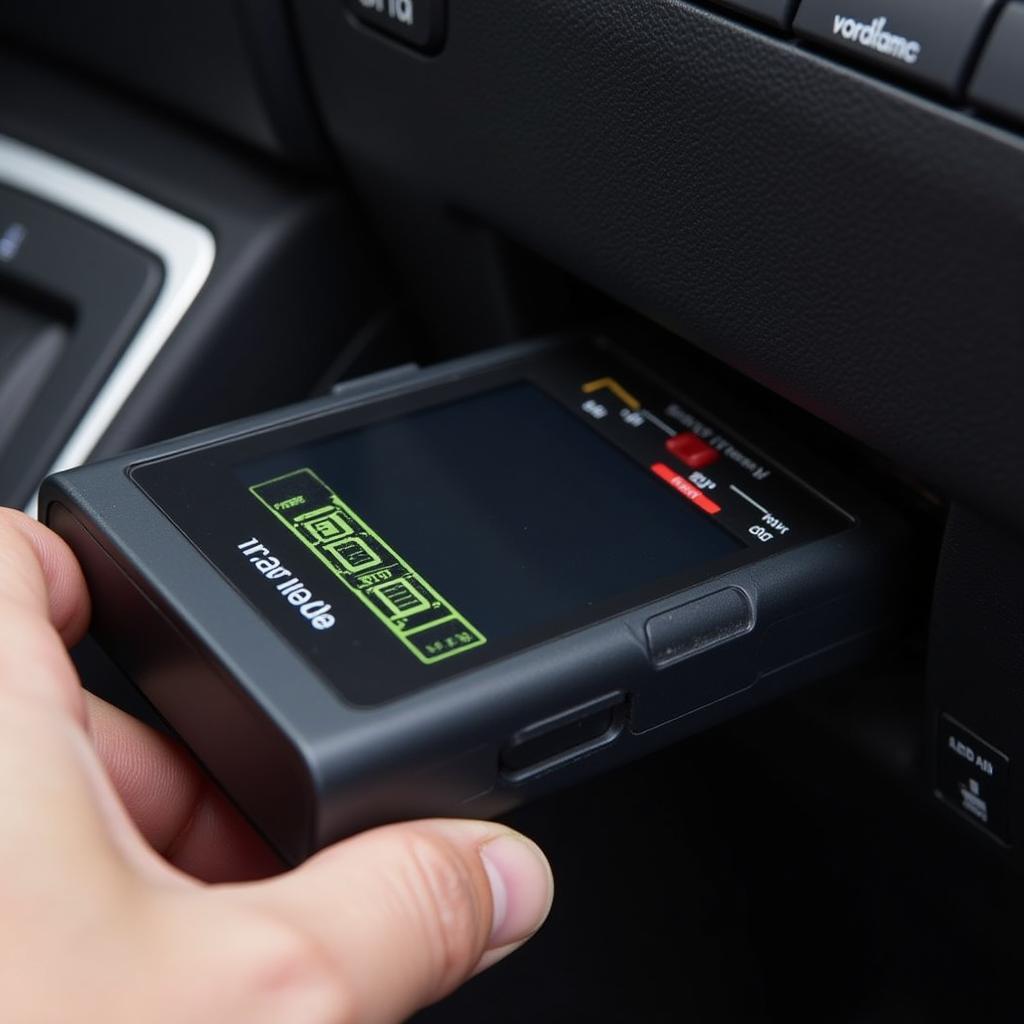Open Source Car Diagnostic Software has revolutionized the way car owners and mechanics approach vehicle troubleshooting. With its accessibility and affordability, it provides a powerful alternative to expensive dealership visits or proprietary software solutions. But with so many options available, choosing the right software for your needs can seem daunting. This guide dives deep into the world of open source car diagnostic software, exploring its benefits, drawbacks, and some of the best options available.
Understanding Open Source Car Diagnostic Software
At its core, open source car diagnostic software allows you to communicate with your car’s onboard computer, retrieve diagnostic trouble codes (DTCs), and monitor various vehicle parameters in real time. Unlike proprietary software, which is often expensive and limited to specific car brands, open source solutions are developed collaboratively and made available freely to anyone. This fosters innovation, encourages community support, and often results in highly customizable and versatile tools.
Benefits of Choosing Open Source
The allure of open source car diagnostic software lies in its numerous advantages:
- Cost-effectiveness: This is arguably the most significant benefit. Open source software eliminates the high costs associated with proprietary options, making it accessible to DIY enthusiasts and budget-conscious mechanics.
- Community Support: With a vast and active community of developers and users, you can find a wealth of information, tutorials, and troubleshooting assistance online.
- Customization: Open source software often allows for customization, enabling you to tailor the interface, features, and functionality to your specific needs.
- Transparency: The open-source nature of the software provides complete transparency into its codebase, ensuring security and allowing advanced users to make modifications.
- Flexibility: Most open source solutions are compatible with a wide range of vehicle makes and models, eliminating the need for multiple software licenses.
 Open Source Software Interface
Open Source Software Interface
Potential Drawbacks to Consider
While open source car diagnostic software offers compelling benefits, it’s essential to acknowledge potential drawbacks:
- Technical Expertise: Utilizing open source software effectively often requires a certain level of technical knowledge and comfort with computers.
- Learning Curve: Navigating the interface and understanding the data can involve a learning curve, especially for beginners.
- Support Limitations: While community support is valuable, it may not always provide instant solutions or address highly specific issues.
- Compatibility Issues: Although rare, some open source solutions might face compatibility issues with certain vehicle models or specific control units.
Key Features to Look For
When choosing open source car diagnostic software, consider these essential features:
- DTC Reading and Clearing: The software should efficiently retrieve and clear diagnostic trouble codes from your car’s computer.
- Live Data Monitoring: Real-time monitoring of engine parameters, sensor readings, and other crucial data is crucial for accurate diagnosis.
- Data Logging: The ability to log data over time helps identify intermittent problems and analyze long-term trends.
- Component Activation: Some software allows for component activation, enabling you to test actuators and sensors manually.
- Graphing and Visualization: Clear and intuitive data visualization tools facilitate data analysis and interpretation.
Top Open Source Car Diagnostic Software Options
Several reputable open source car diagnostic software options have gained popularity:
- OpenDiag: Known for its active community and support for a wide range of vehicle makes.
- FreeSSM: A robust option specifically designed for Subaru vehicles.
- PyRen: A Python-based solution offering advanced customization and scripting capabilities.
 Car Diagnostic Code Reader
Car Diagnostic Code Reader
Making the Right Choice
Selecting the right open source car diagnostic software depends on your specific needs, technical expertise, and the make and model of your vehicle. Researching user reviews, comparing features, and exploring community forums can help you make an informed decision.
Open Source: Empowering Car Owners and Mechanics
Open source car diagnostic software has democratized vehicle diagnostics, empowering car owners and mechanics with affordable and accessible tools. By understanding the benefits, drawbacks, and key features, you can leverage the power of open source to maintain and troubleshoot your vehicle effectively.
FAQs about Open Source Car Diagnostic Software
1. Is open source car diagnostic software safe to use?
Yes, reputable open source software is generally safe. However, it’s crucial to download it from trusted sources and exercise caution when making modifications to your vehicle’s systems.
2. Can I use open source software with any OBD-II adapter?
Not all open source software is compatible with every OBD-II adapter. It’s essential to verify compatibility before purchasing an adapter.
3. Do I need coding knowledge to use open source car diagnostic software?
While basic usage might not require extensive coding knowledge, familiarity with computers and troubleshooting concepts is beneficial.
4. Can open source software provide the same level of functionality as professional scanners?
Some open source solutions offer a comparable level of functionality to professional scanners, especially for basic to intermediate diagnostics.
5. Where can I find support for open source car diagnostic software?
Online forums, community websites, and dedicated support groups are excellent resources for finding assistance and troubleshooting tips.
 Online Car Diagnostic Forum
Online Car Diagnostic Forum
Need Further Assistance?
For personalized guidance and expert support on car diagnostics, contact us via WhatsApp: +1(641)206-8880 or email us at [email protected]. Our 24/7 customer support team is always ready to assist you.

Leave a Reply